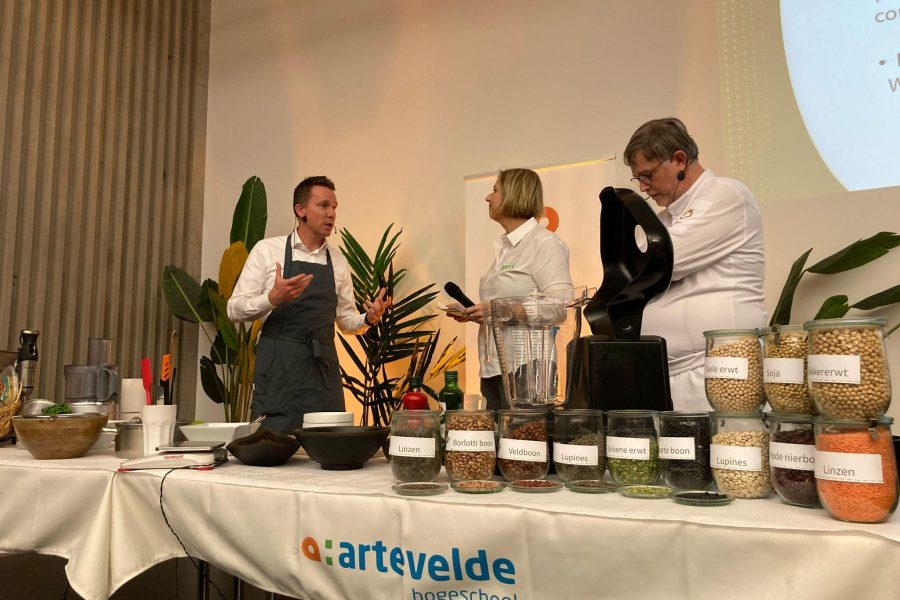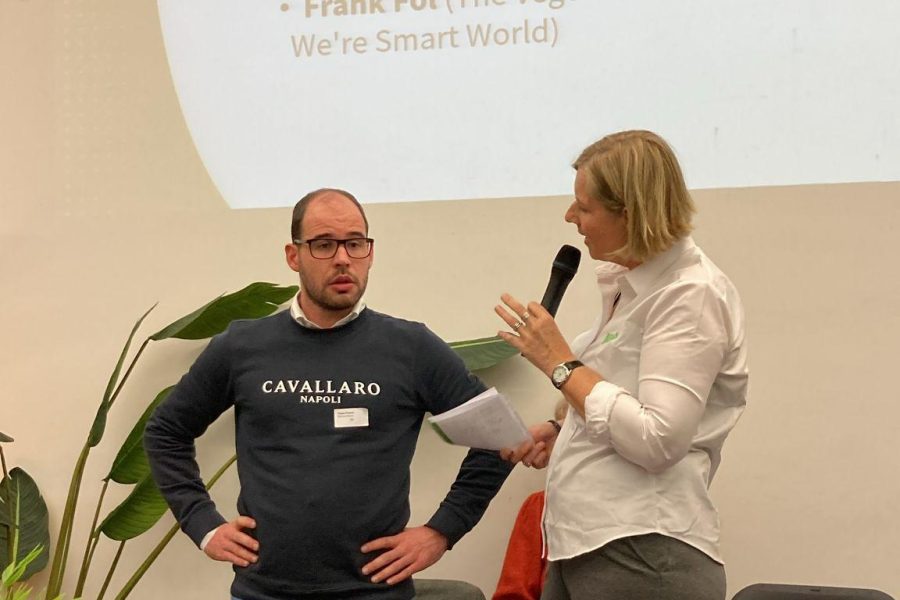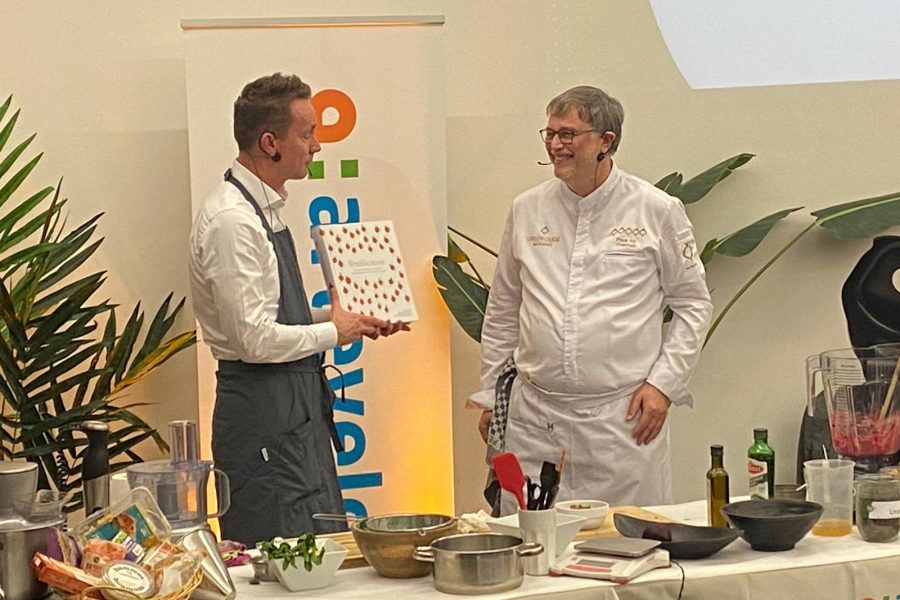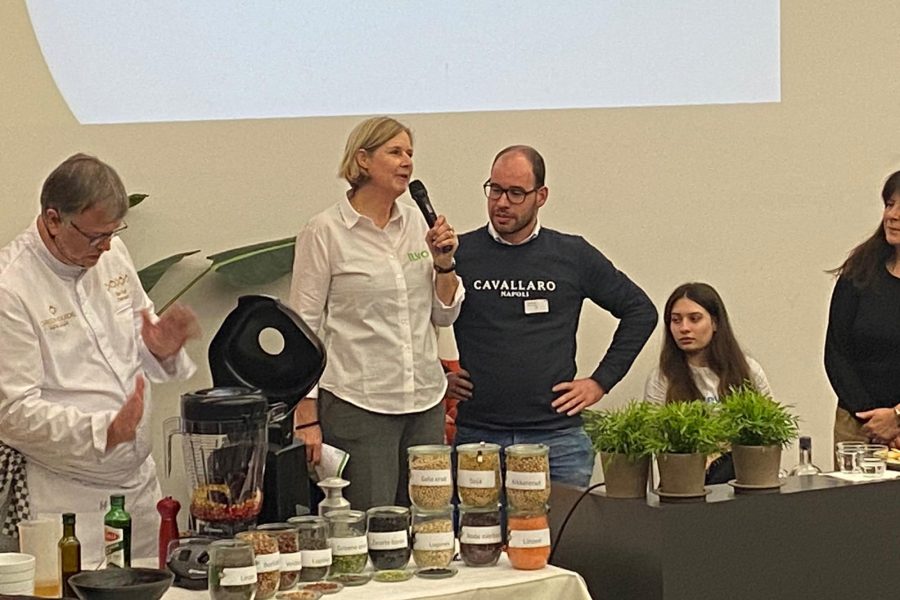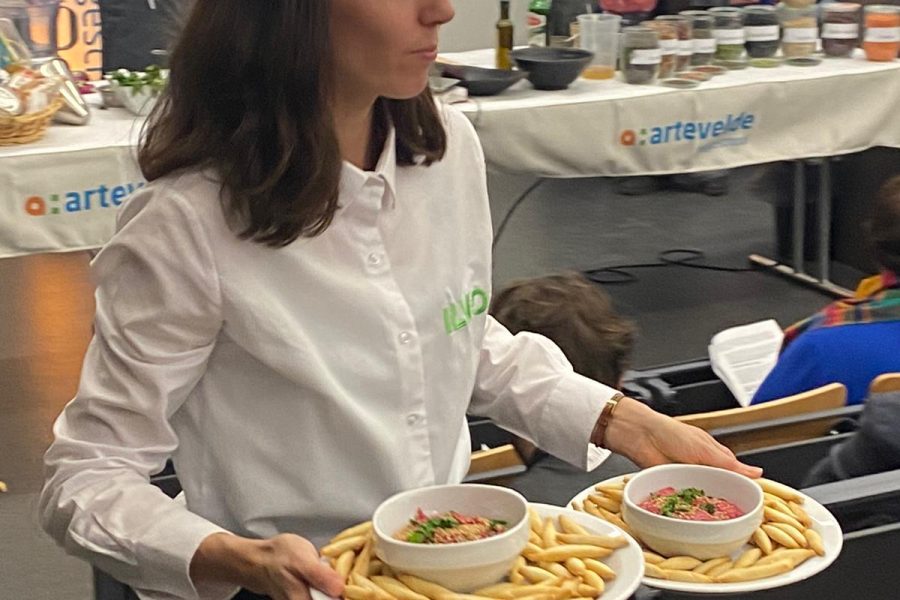Press release Plant-based proteins from farm to fork? Chain experiments deliver practical, tasty and promising results
Two years of intensive research and participatory experiments with five leguminous and protein crops show the way to the most feasible and further developable local vegetable protein chains. Chickpea, yellow pea and soy produced in Flanders have made it to the supermarket via creatively developed ready-to-eat products, with positive consumer taste and market assessments.
Minister of Agriculture, Innovation and Economy Jo Brouns listened to the achievements of five protein projects during the Easy Peasy event in Ghent on February 6, 2024: "Flanders with its fertile delta region and its innovative food companies is the right place to produce more local plant proteins, as Europe calls for. This research provides building blocks for improved cultivation techniques and varieties, inclusive business models and efficient processing chains. By exploring all links, values and bottlenecks simultaneously, the agri-food sector can move forward more strategically with sustainable local protein products."
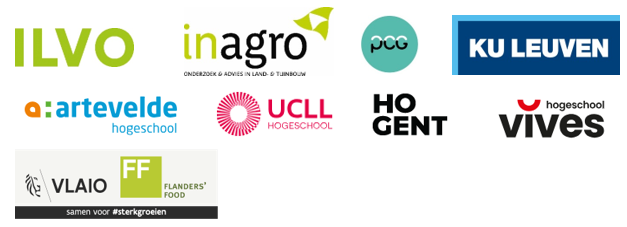
Chickpea: consumers like the organic falafel nuggets and hummus
The KIKET project conducted research that literally went from field to fork: in the field, there were comparative trials of different varieties of chickpea and tests of beneficial soil bacteria given to the seed to improve natural nitrogen fixation by planting. Enough local chickpeas - organic and conventional - were harvested from the nearly 3 acres of trial and field plots to explore multiple processing options as well.
The organic chickpeas from the Trial Platform for Agroecology in Hansbeke (PHAE) were processed by Abinda into organic falafel nuggets. The conventional chickpeas from Peas&Beans were processed into hummus by Deldiche through Greenyard. Partner Delhaize undertook to commercialize both products as trials, and properly document sales. Some 60 consumers were subjected to a comparative taste test, presenting organic falafel and hummus with exactly the same recipe, but based on imported and locally grown chickpeas, respectively.
Elena Lievens, KIKET coordinator and researcher at Arteveldehogeschool: "We recorded a positive taste evaluation of both local chickpea products. Consumers also showed an openness to locally grown chickpea during an online survey. And at Delhaize the products sold well. In short: hopeful, positive signals from consumers."
However, the cost price of locally grown chickpea is still significantly higher than the current world market price. Cultivation is still risky and the acreage is too limited to enjoy the same economies of scale as growers abroad. Moreover, there is still work to be done to create an inclusive earnings model with risk spreading among the chain actors.
"Locally, the ideal scale of a local chickpea chain has not yet been calculated. But chickpeas are wildly popular today, have very many possible applications, pure or processed, and therefore stand a realistic chance as a new agri-food chain," is the hopeful conclusion of the researchers.
Soy: flour for organic bread and fresh pasta shows potential
The cost price of Flemish organic soy is also considerably above the general (world) market price, in part because organic cultivation produces lower crop yields and both the cultivation and the processing are too small to have economies of scale. The researchers within the LoCoSoy project explored the potential to develop end products from previously small soybean volumes with minimal processing, i.e. without expensive technical intermediate steps such as protein extraction. The beans were shelled and ground, then the flour was made into fresh pasta and bread. Bio-Planet is investigating whether it can include the pasta and bread in its retail assortment.
Ellen Martens, Flanders' FOOD innovation manager and LoCoSoy coordinator: "The lesson is that partnerships such as cooperatives and risk-sharing across actors can lead to a viable, local protein chain. Another observation is that there are local players who could take up the small-scale, minimal processing of soy, although protein crops are not their specialization."
Within this project, there were nine partners, including three farmers, one processor (La Vie est Belle) and one retailer (Colruyt). They are considering expanding the partnership. Besides further development of pasta and bread, there is also demand for local soy as a raw material for plant-based cheese and fish alternatives (via fermentation). By working out different business models, a profitable cooperation between the chain actors involved can be established.
Yellow peas: at home in every protein-based recipe
In 80% of the screened legume-based products you can already find yellow pea, either as such or only the protein or the fiber. Therefore, from a nutritional and technological point of view, yellow pea is interesting. It has high protein and fiber content, a valuable amino acid profile and neutral color and taste. Although it is in demand by food companies, it can hardly be called a local crop.
The PeaPact project has been working to increase knowledge about how to cultivate yellow pea by performing conventional and organic field trials with both winter and summer peas. Those trials bring more clarity to the choices farmers can make, but also show variation in yield. In addition, processing into local foods, including falafel and hummus, was looked at.
Evelien Van Bavegem, HOGENT researcher and PeaPact coordinator: "The most important finding from our consumer research is that there is still some way to go to reach the general public. Yellow pea products are not yet widely known. At the same time, we see a clearly motivated target audience for yellow pea-based products, and by extension legume-based products.
In any case, the Hobbit, DeliFresh/Greenyard and Cosucra are interested in further developing their collaboration."
Red kidney bean: versatile with successful case
When oyster mushrooms are harvested, stems are left over and they prove interesting as a raw material for processed ready-to-eat products such as the oyster mushroom burger. In a West Flanders cluster including Brugs Foodlab vzw, Vives, Inagro, Kopje Zwam, Stad Brugge, de Republiek, Rikolto and Casibeans, the oyster mushroom burger was further developed by adding a tempeh of red kidney beans to the mushroom stalks. As a result, the oyster mushroom burger contains a protein content of between 20 and 25%. More than 200 students participated in pilot labs to systematically update the taste.
Thibault Lejeune, Bruges Food Lab and leader of 'An oyster mushroom burger full of protein': "The developed semi-finished red kidney bean is particularly useful for particularly versatile applications."
Greenhouse-grown legumes for niche prime sales: no quick win
Growers of lettuce and other cold greenhouse crops pause their conventional production during the summer months to manage disease pressure in their greenhouses. They are asking for an alternative and economically viable summer crop to cultivate in the empty greenhouses. Perhaps the hole in the market is the cultivation of leguminous crops such as edamame, chickpea, red or brown bean or borlotti bean? As a fresh crop, the beans could have prime value for the catering industry, thus tapping into a niche market.
However, researchers in the project KIPEI (Chain-wide Initiative for Plant Protein from Flemish Cold Greenhouses) report no accelerated ripening due to the high humidity in the greenhouse. Moreover, there are no adapted machines, which increases the labor cost and sales price. In addition, interested restaurants demand a sufficiently long marketing period of the same product, which requires a phased sowing in the greenhouses and again results in more labor.
Consumer response was tested at weekly markets and in packaging-free stores but even there success was limited due to lack of experience with consumers preparing freshly picked legumes at home.
Saskia Buysens, PCG coordinator and coordinator of KIPEI: "The greenhouse turns out to be an expensive place to grow these protein crops. In open field, with machine operations, it is already a challenge to make them profitable. For now, therefore, greenhouse cultivation is not considered applicable for most crops. However, for the most promising niche crops such as fresh edamame, this path could be further explored."
EASY PEASY event: well-planned, chain-based approach pays off
In the five projects mentioned (KIKET, LoCoSoy, PeaPact, Oyster burger full of proteins and KIPEI) a total of more than 40 knowledge centers, farmers and companies cooperated on protein crops. The projects came about thanks to the support of the Flemish government and are part of the Flemish protein strategy.
Elena Lievens, Artevelde University College Ghent and organizer of the Easy Peasy event: "The goal was to increase the practical knowledge of farmers and each of the links in the processing and trade. (Re)introducing locally grown protein crops from farm to fork requires a systematic and chain-oriented approach. We already are seeing a lot of enthusiasm among the participating farmers and companies."
The research partners are Arteveldehogeschool, ILVO, INAGRO, Flanders' Food, KULeuven, PCG, HOGENT, Vives, UCLL and Brugs Foodlab vzw. The farmers, stakeholder organizations and processing or retail companies involved are PHAE, Peas and Beans, Ekoto, Biograno, Willy Vanderlinden, Marc Mingneau, Johnny Versonne, Dirk Claessens, Didier Heyse, Marc Van Coppernolle, Deldiche, Greenyard, Abinda, Rikolto, Delhaize, Colruyt, Biograno, La Vie est Belle, Boerenbond, Bond Beter Leefmilieu, Cosucra, De hobbit, Greenway, Casibeans, Kopje Zwam, stad Brugge, de Republiek and Rikolto.

Contact
Elena Lievens, Arteveldehogeschool Gent, Sustainability Policy Worker, KIKET Project Coordinator and organizer of the Easy Peasy event: +32 479 72 49 75, elena.lievens@arteveldehs.be
